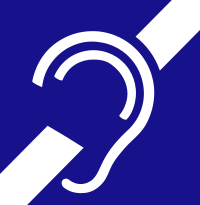
Photo from wikipedia
Human usage of coastal water bodies continues to increase and many invertebrates face a broad suite of anthropogenic stressors (e.g., warming, pollution, acidification, fishing pressure). Underwater sound is a stressor… Click to show full abstract
Human usage of coastal water bodies continues to increase and many invertebrates face a broad suite of anthropogenic stressors (e.g., warming, pollution, acidification, fishing pressure). Underwater sound is a stressor that continues to increase in coastal areas, but the potential impact on invertebrates is not well understood. In addition to masking natural sound cues which may be important for behavioral interactions, there is a small but increasing body of scientific literature indicating sublethal physiological stress may occur in invertebrates exposed to high levels of underwater sound, particularly low frequency sounds such as vessel traffic, construction noise, and some types of sonar. Juvenile and sub-adult blue crabs (Callinectes sapidus) and American lobsters (Homarus americanus) were exposed to simulated low-frequency vessel noise (a signal was low-pass filtered below 1 kHz to ensure low-frequency content only) and mid-frequency sonar (a 1-s 1.67 kHz continuous wave pulse followed by a 2.5 to 4.0 kHz 1-s linear frequency modulated chirp) and behavioral response (the animal’s activity level) was quantified during and after exposure using EthoVision XT™ from overhead video recordings. Source noise was quantified by particle acceleration and pressure. Physiological response to the insults (stress and recovery) were also quantified by measuring changes in hemolymph heat shock protein (HSP27) and glucose over 7 days post-exposure. In general, physiological indicators returned to baseline levels within approximately 48 h, and no observable difference in mortality between treatment and control animals was detected. However, there was a consistent amplified hemolymph glucose signal present 7 days after exposure for those animals exposed to mid-frequency sound and there were changes to C. sapidus competitive behavior within 24 h of exposure to sound. These results stress the importance of considering the impacts of underwater sound among the suite of stressors facing marine and estuarine invertebrates, and in the discussion of management actions such as protected areas, impact assessments, and marine spatial planning efforts.
Journal Title: PeerJ
Year Published: 2022
Link to full text (if available)
Share on Social Media: Sign Up to like & get
recommendations!